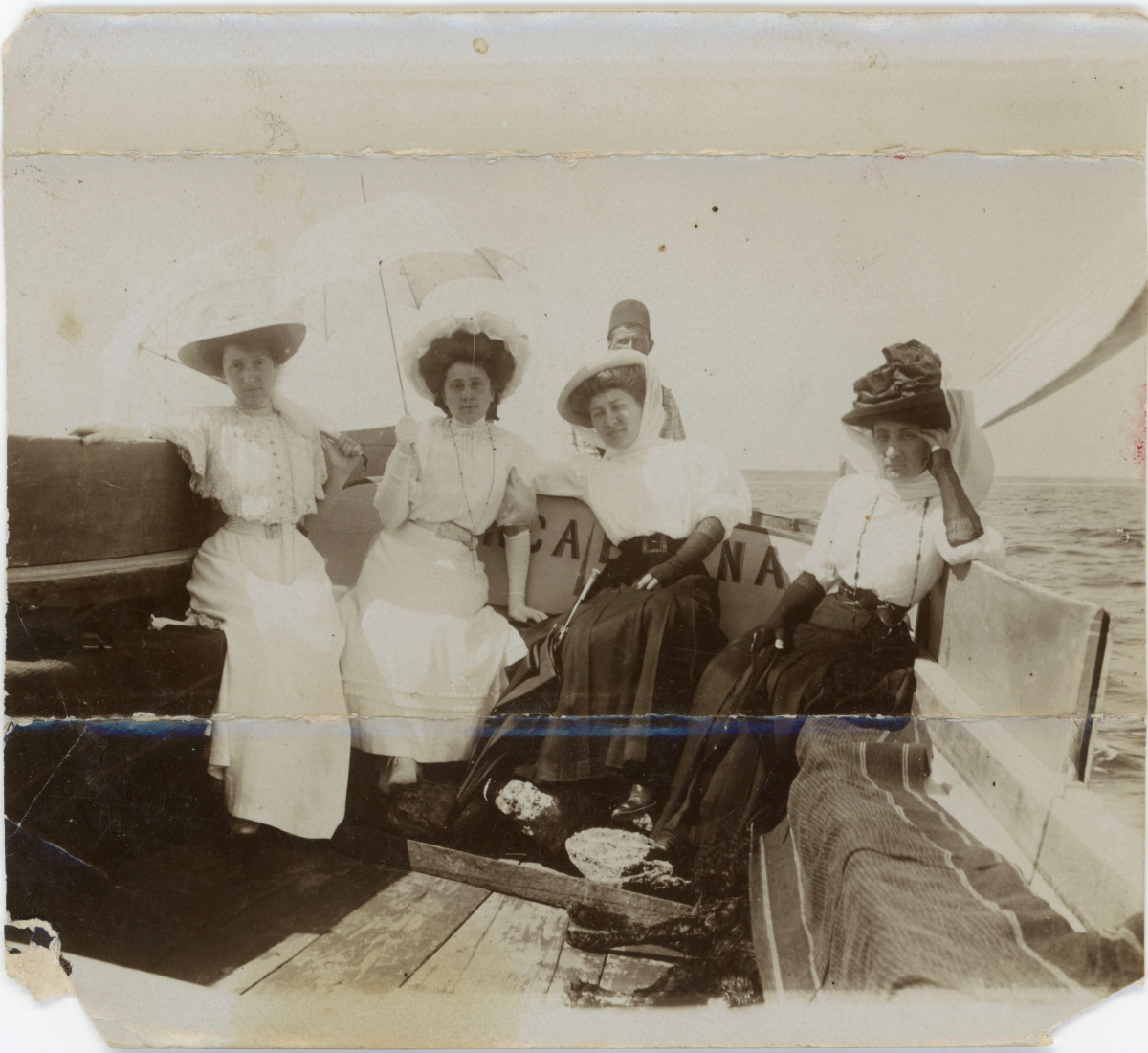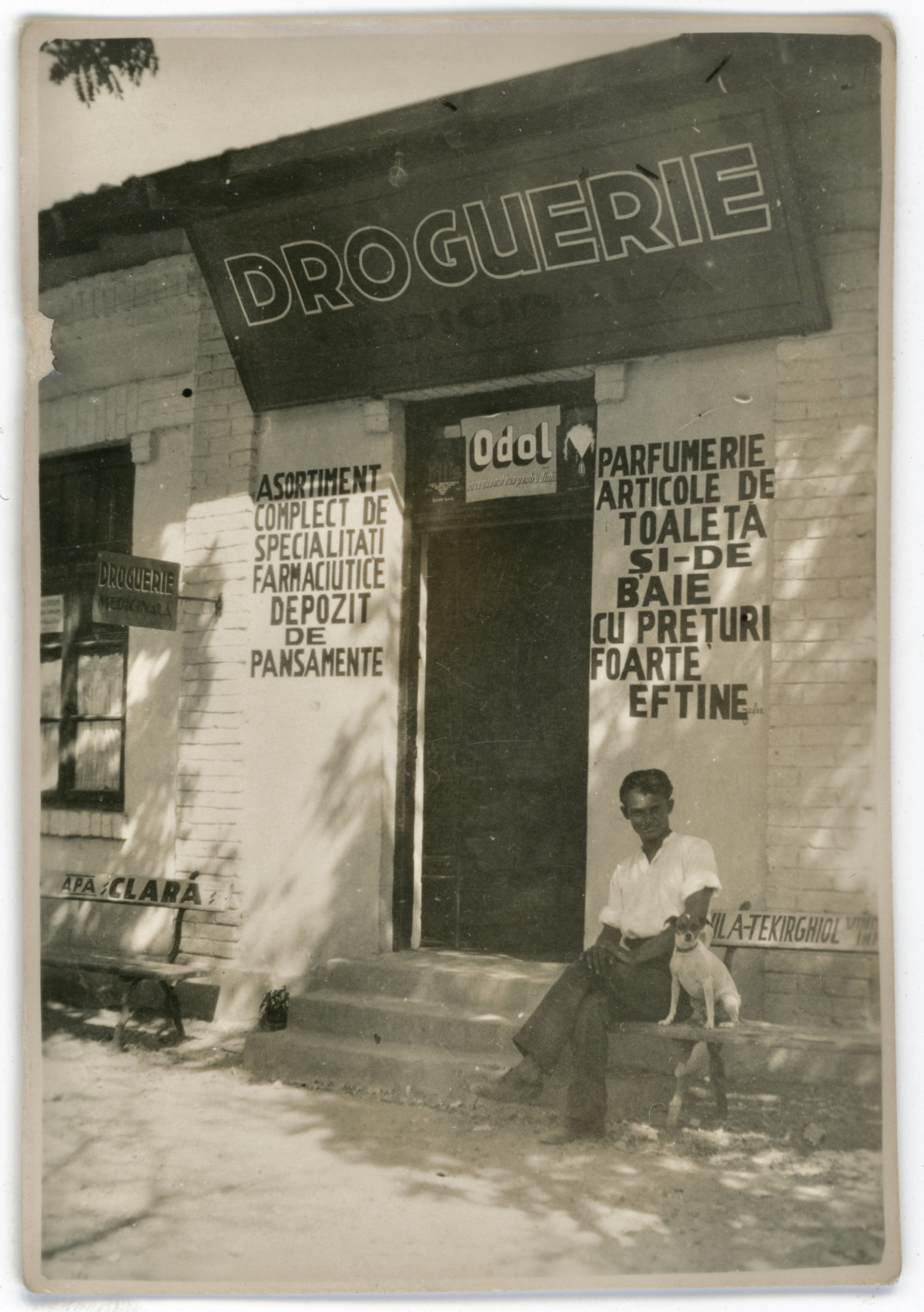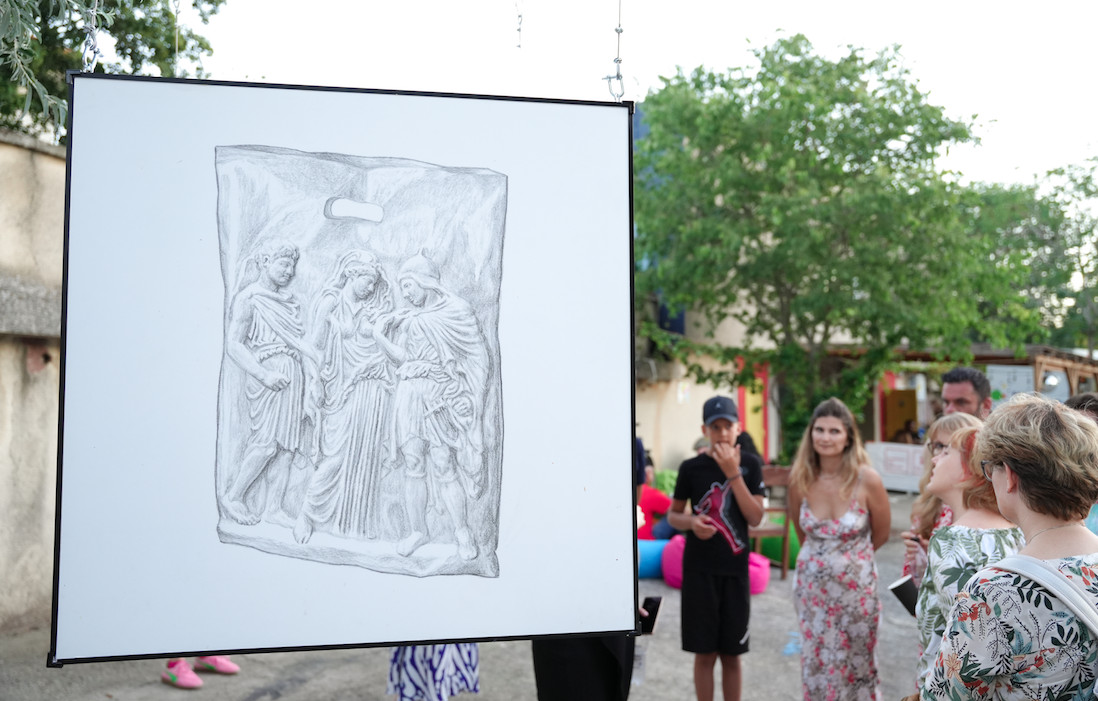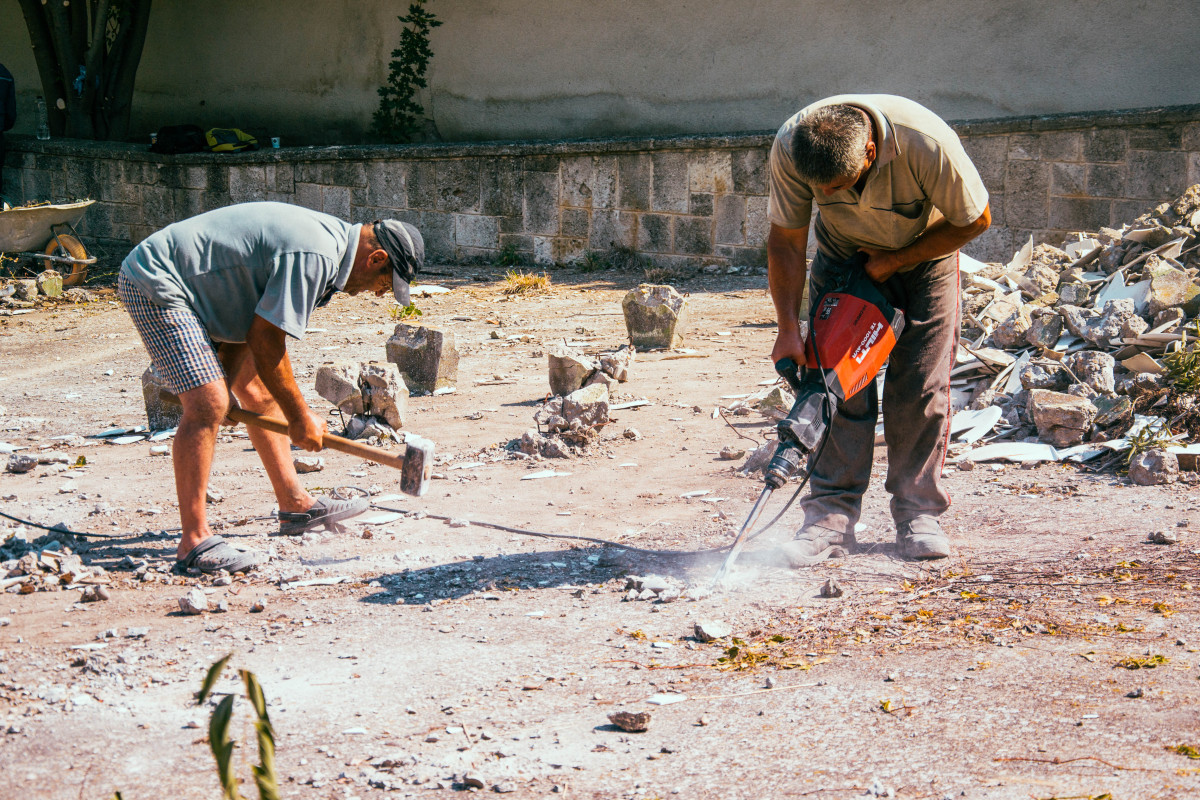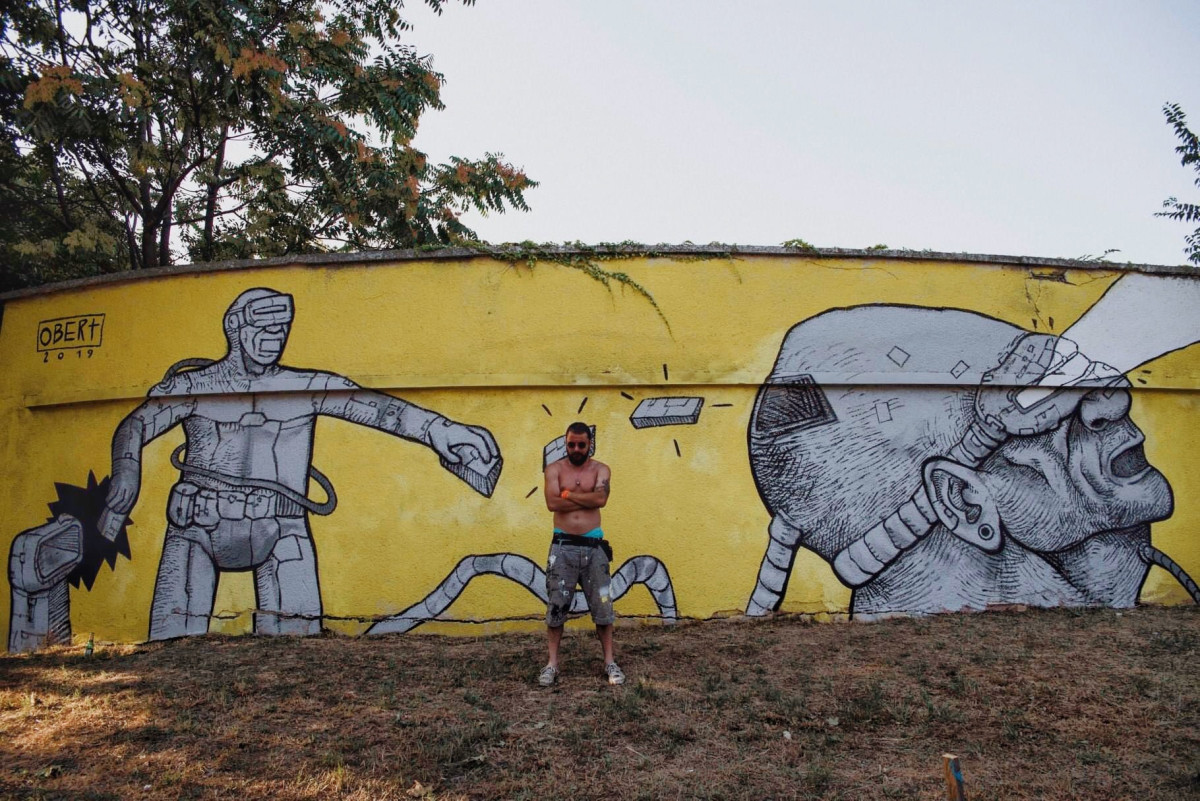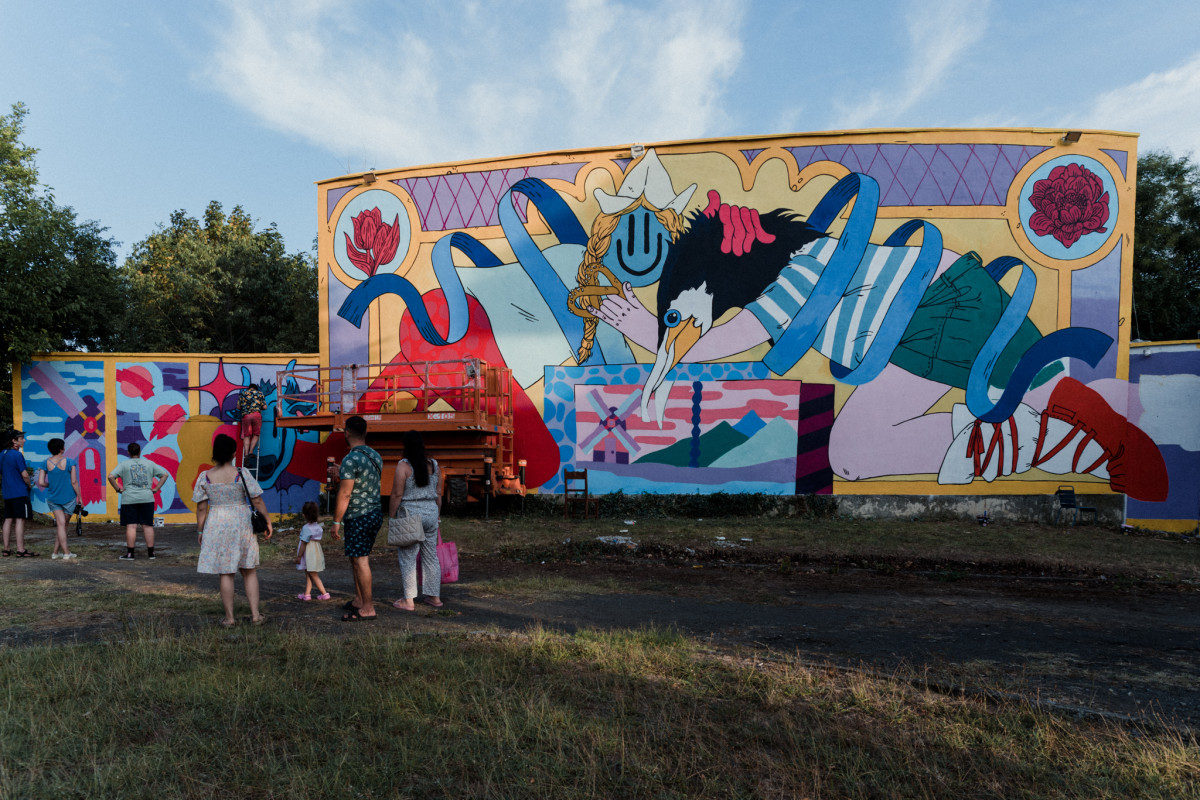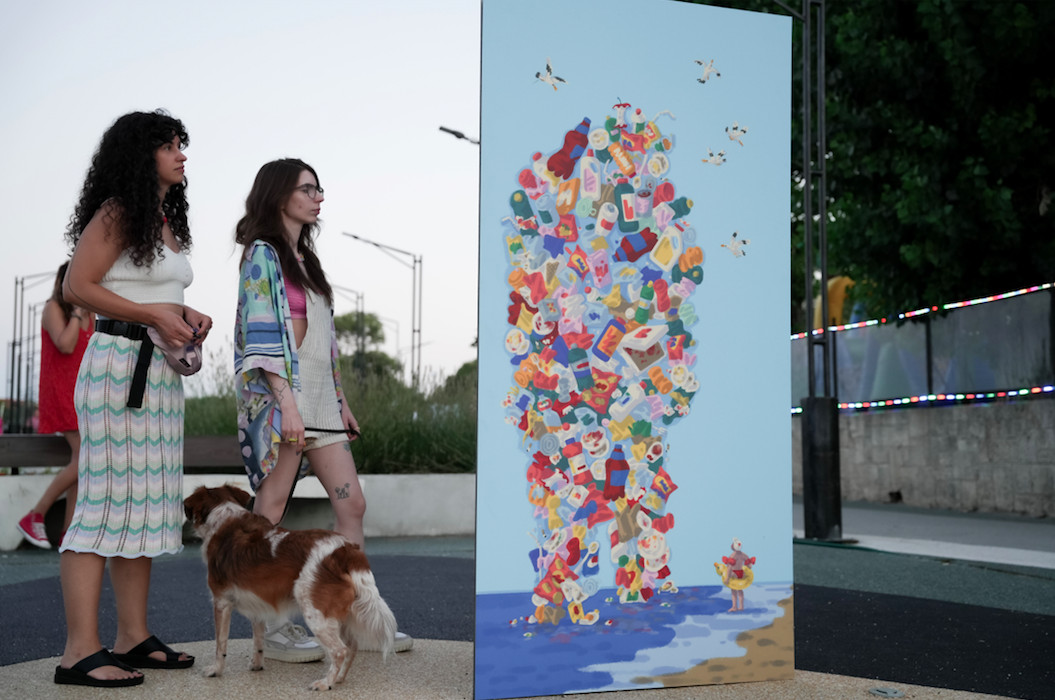The Eforie Colorat project will be presented as an example of good practices in the revitalization of assets from old European tourist resorts at the exhibition “Thermal and spa heritage of Romania: past and future”, which will be held in Paris, on the occasion of the European event “Heritage Days”. Organized by the Romanian Cultural Institute, in partnership with Pro Patrimonio France, this year’s edition follows two central themes, “Thermal Heritage” and “Balne Heritage”. The endeavor aims to examine how the rich history of thermal baths has been illustrated in Europe and in Romania, including from the Second World War to the present day. The documentation also traces the legacy that these places leave in the regions whose development they once marked, but also their ability to be reborn, through contemporary urban regeneration projects. The former thermal and spa complexes are in various stages of conservation, some of them are in very bad condition, others – in full transformation process, but all of them are of strong social, economic and architectural interest at local, national or international level. The former baths will once again tell their stories at this conference, in a discourse with a particular emphasis on architecture and urbanism, data recovered from documents, photographs, short films and case studies of revitalization projects underway in various places from Romania. The opening of the exhibition will take place in the French capital on September 19, at the Macadam Gallery of ICR Paris (1, rue de l’Exposition, 75007 Paris).
Eforie Colorat, one of the four projects of excellence in heritage revitalization
The Pro Patrimonio Foundation and ICR dedicate a remarkable laudatio to the thermal and spa heritage in Romania. In the series of illustrated panels brought together in this exhibition, an introductory section integrates Romanian heritage into a wider, European framework, explaining how thermal and spa resorts in Romania developed, inspired by what was happening in cities in France, Germany, England.
“In the two sections of the exhibition, we present three thermal resorts, Herculane, Govora and Campulung, some of the most documented cases, interesting, among many others, because they were designed in different eras and on different scales. The coastline is presented in the same reading grid, with three resorts, Mamaia, Eforie – which later became South and North – and Neptun-Olimp. Eforie Sud, originally Băile Movilă, was the first resort on the Romanian coast. Mamaia soon appeared and, much later, Neptun-Olimp, a complex that shows the momentum that the seaside had in the 70s, when it was built extensively and very modern. The panels included in the exhibition give a brief history of these resorts, present the equipment of each of them, the casino, the summer theater, the great restaurants, shops, hotels… A good part of this heritage is in decline. That’s why the last panel, in the form of open conclusions, presents examples of good practices for the revitalization of these spaces, carried out in a social, economic, political context that has evolved over the last 30 years”. Paul Stancioiuarchitect specialized in heritage, member of Pro Patrimonio.
The Eforie Colorat project is among the four examples of good practice evoked by this exhibition. Two of them target the thermal area, Herculane and Govora, where local associations work with young architects, professionals and students, to make various interventions or to impose regulations or town planning plans. Another laudable initiative belongs to the Parisian school Chaillot Schoolthanks to the professor of Romanian origin Ștefan Mănciulescu, chief architect of the Historical Monuments. The team targets the Eforie area as part of an extended project in the countries of the Black Sea region, Bulgaria, Romania, the Republic of Moldova and Ukraine. The program, which plans specific heritage restoration projects, will start at Eforie Sud, by analyzing some objectives such as the Movilă Casino (arch. A. Cerkez, 1935) and the Sand Castle, later the Vraja Marii bar (arch. H . Delavrancea-Gibory, 1934). Eforie Colorat is mentioned in this series with the Cinemascop garden revitalization program (inaugurated in 1960), a project to reintegrate into the community an emblematic space of the city, abandoned, for decades, into oblivion. Launched in 2021 in Eforie Sud, Eforie Colorat is a cultural hub designed for the benefit of tourists and members of the local community, a dialogue platform for artistic communities and civic dialogue groups at the national level – which have at their disposal, annually, a series of of creative residences on the Black Sea. Initiated by the Visual Arts Forum, in partnership with the Czech Center and the Eforie City Hall, the Eforie Colorat program aims to promote a set of best practices for the development of areas with limited access to culture, raising the level of education and awareness in environmental issues and revitalizing the spaces of community meeting on the shores of the Black Sea. Annually, Eforie Colorat wants to be an alternative space of inspiration for the artistic community, for decision-makers from local and central administrations, and a meeting point for specialists and civic groups, in a joint effort to identify current solutions for urban regeneration, creative ecology , ethical and coherent exploitation of tourism potential, circular economy, civic spirit, sustainable development and growth opportunities through culture in marginalized areas.
“The oldest resort on the Romanian coast relies on culture in the rehabilitation process. We open alternative spaces, where creative communities meet their audiences and use art and dialogue as ways to question society. As a first step in the development process, we started in 2021 with a seasonal cultural offer, we opened alternative exhibition spaces. We then thought of an extensive development program, which keeps the Cinemascop garden, the wonderful open-air cinema of the city of Eforie, open throughout the year, but also includes other places in the Eforie-Techirghiol area, including the coastal area. I also activated the high school in Eforie Sud or other local institutions and community centers for this project. It is an attempt to talk about simplicity and nature in an era where technology is changing everything, from the role and meaning of the artistic act, to the sensitive matter with which it operates. At the same time, it is an attempt to talk about the ethical and coherent exploitation of tourism potential, sustainable development and growth opportunities through culture. The Eforie Colorat Festival brings back the memory, culture and charm of an abandoned garden, whose immense potential has remained unexploited for the past three decades.” Alexandra Dumitrescu and Emil Cristian Ghitathe founders of the Eforie Colorat cultural hub.
Carmen Sylva, the pearl of the Romanian coast
“The use of water for purposes other than drinking or irrigating crops dates back to the dawn of time. Water, sacred, miraculous, restful, healing, pleasing to the eye, and at the same time having so much power, has had multiple roles in human societies. Hydrotherapy is one of the most common forms and Europe has experienced exceptional development in this direction. The ancient thermal baths, the Scandinavian, Greek, Roman or Turkish baths, began to fascinate the world since the beginning of the 18th century, and by the 1930s they took the form of a European thermal culture, which led to the emergence of the great international resorts” , say the organizers of the Paris event.
A story beginning that includes and evokes the history – long forgotten by travelers and times alike – of the baths Carmen Sylva, a small town with a holiday identityin which “locals and tourists interact, and their lives change for a few days or for a few months, because they are lived together”.
One hundred years ago, with the appearance of the accommodation infrastructure, vacationers appeared in Techirghiol-Movilă and Eforie, the current Eforie Nord. The transport infrastructure was left waiting for a while. It became functional only at the end of the 1920s, when the blue train was already in use. People used to go with their families to Eforie, where wealthy people gathered, despite the weather. Good people came to Movilă, but more bourgeois and fun-loving. The times since then tell their stories in vacation photos, with men in summer hats, women with umbrellas, a universe of parks, villas, water casinos, beaches and lots of people in charming bathing suits. Other photos capture buildings in the locality, such as “Drogueria Vila Tekirghiol”, in front of which a man with a dog shows us that products could be bought here at “very cheap” prices.
Eforie Colorat was inspired by all these stories from the Black Sea. From stories about beach games from the 1960s – 1970s, when space was somehow wider, more unrestricted, when you could chase the ball on the sand with your head, without bumping into anyone. Stories about the years of stormy blizzards, when the sea froze, about the invasions of foreigners, Germans, Swedes whose luggage the children rushed to carry. Stories were told of revelry in restaurants and moonlit dance nights. Or about seasonal photos that took their time on the seafront, around the terraces, at the Casino. There were many of them, especially in the 1920s and 1930s, and they can even be seen in some photos of fellow… amateurs, on vacation in the sun. All these histories were recorded and added to the “Archives of the Coast”, a two-year effort, in 2022 and 2023, and intended to recover the identity of the Black Sea localities, starting from the resort between the waters, located between the bay and the sea, Ephoria South.
Photo credit:
The Coast Archives Collection, owned by the Visual Arts Forum
Diana Paun
Ephoria_up
Ruxandra Lipan
Alexandra Dumitrescu
Team: Founders: Alexandra Dumitrescu and Emil Cristian Ghiță | Graphics: Andrei Turenici | Communication: Evantia Barca | Social Media: Alexandra Ghita
COLORFUL EPHORY
Organized by Visual Arts Forum
Sponsor principal: Kaufland Romania
Supported by: Bucharest Czech Center, Eforie City Hall, RADEF Romania Film, French Institute, ARCHÉ, Short Film Breaks, Acuarela, Pink Pill, Etaj on Wheels
Sponsors: Diesel Mecanica, Azuga, Caii de la Letea, Iulius Mall, Red Rose Residence, Kafmet Construct, Casa cu Smochin, Buzz Events
Media partners: Agerpres, Propargarta, The Institute, AARC, Spotmedia, IQds, SMARK, Zeppelin Magazine, UPR, Art Magazine, Radio Romania Cultural, Modernism.ro, Days and Nights, Movies-Books, Daily Magazine, Metropolis newspaper, CineFan, CineMap, CineGuide, MovieNews, Radio Constanta, Feeder, DigitizeArt, stiri.ong, MUNTEANU, Igloo, Empower Artist Magazine, HAPP, Radio Romania International, The book agency, The Woman, curatorial.ro, Radio Vacation, Golan Magazine, The Workshop Magazine, Arts See, Radio Guerrilla, Tomis magazine, REGARD, The Expert
Source: www.iqads.ro


